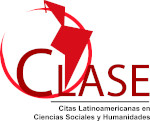Educação permanente como ferramenta para melhorar indicadores de infecção relacionados à assistência à saúde
DOI:
https://doi.org/10.26849/bts.v50.976Resumen
Com o objetivo avaliar a implantação de estratégias de educação permanente em saúde (EPS) para os indicadores de infecções hospitalares (IRAS) em hospital público, o estudo transversal foi realizado com equipe profissional de UTI, com intervenção educativa e análise de indicadores pré/pós-intervenção. A EPS com a equipe resultou na melhoria dos escores pós-intervenção. O potencial de uso de estratégias colaborativas para identificar intervenções e ações necessárias para monitorar e conter IRAS são imprescindíveis para uma assistência de qualidade pela equipe multiprofissional.
Descargas
Citas
AGÊNCIA NACIONAL DE VIGILÂNCIA SANITÁRIA. Medidas de prevenção de infecção relacionada à assistência à saúde. Brasília, DF: Anvisa, 2017. (Segurança do paciente e qualidade em serviços de saúde).
AGÊNCIA NACIONAL DE VIGILÂNCIA SANITÁRIA. Prevenção de infecções por microrganismos multirresistentes em serviços de saúde. Brasília, DF: Anvisa, 2021. (Segurança do paciente e qualidade em serviços de saúde). Disponível em: https://www.gov.br/anvisa/pt-br/centraisdeconteudo/publicacoes/servicosdesaude/publicacoes/manual-prevencao-de-multirresistentes7.pdf. Acesso em: 27 mar. 2021.
ALLEGRANZI, B. et al. ‘My five moments’: understanding a user-centred approach to hand hygiene improvement within a broader implementation strategy. BMJ Quality & Safety, v. 31, n. 4, p. 259-262, 2022.
ALZYOOD, M. et al. COVID-19 reinforces the importance of handwashing. Journal of Clinical Nursing, v. 29, p. 2760-2761, 2020.
CENTERS FOR DISEASE CONTROL AND PREVENTION. The Core elements of hospital antibiotic stewardship programs: 2019. [S. l.]: Centers for Diseases Control and Prevention, [2019]. Disponível em: https://www.cdc.gov/antibiotic-use/healthcare/pdfs/hospital-core-elements-H.pdf. Acesso em: 11 jul. 2024.
GALVÃO, M. R. S. et al. Incidence density of primary bloodstream infection associated with central venous catheter in Brazil. Research, Society and Development, v. 10, n. 10, 2021.
GIROTI, A. et al. Programas de controle de infecção hospitalar: avaliação de indicadores de estrutura e processo. Revista da Escola da Enfermagem da USP, Ribeirão Preto, v. 52, e03364, 2018.
GORLA, B. C. et al. Intervenção educativa com os profissionais de enfermagem sobre os cuidados e manutenção do cateter venoso central de curta permanência em pacientes adultos críticos. Research, Society and Development, v. 11, n. 11, 2022.
GOULD, D. et al. The problem with ‘My five moments for hand hygiene’. BMJ Quality & Safety, v. 31, n. 4, p. 322-326, 2022.
KARAPANAU, A. et al. Failure of central venous catheter insertion and care bundles in a high central line-associated bloodstream infection rate, high bed occupancy hospital. American Journal of Infection Control, v. 48, n. 7, p. 770-776, 2020.
KASHYAP, R. et al. Effectiveness of a daily rounding checklist on processes of care and outcomes in diverse pediatric Intensive Care Units across the world. Journal of Tropical Pediatric, v. 67, n. 3, fmaa058, 2021.
KATYAL, S. et al. A self-reported survey on the implementation of infection prevention and control elements in Indian hospitals, part of a HAI surveillance network: results from 23 hospitals conducting a standardized IPC assessment. American Journal of Infection Control, v. 51, n. 1, p. 29-34, 2023.
LIMA, Y. C. et al. Contribuições da enfermagem na prevenção de infecções relacionadas ao cateter venoso central em unidades de terapia intensiva: revisão integrativa. Revista Eletrônica Acervo Enfermagem, v. 13, 2021.
MARAN E. et al. Round multiprofissional com checklist: associação com a melhoria na segurança do paciente em terapia intensiva. Revista Gaúcha de Enfermagem, v. 43,
2022.
MOHAPATRA, S. et al. Impact of continuous education and training in reduction of central line-associated bloodstream infection in neurointensive care unit. Indian Journal of Critical Care Medicine, v. 24, n. 6, p. 414–417, 2020.
PACHECO, J. M. S. V.; DIAS, B. F. Infecção de corrente sanguínea relacionada ao manuseio de cateter venoso central em pacientes internados na unidade de terapia intensiva: revisão interativa. Brazilian Journal of Health Review, Curitiba, v. 4, n. 3, p. 11804-11812, 2021.
PEREIRA, A. F. et al. Nurse’s role in managing adverse events related to central venous catheters: integrative review. Research, Society and Development, v. 10, n. 10, 2021.
PURO, V. et al. Pillars for prevention and control of healthcare-associated infections: an italian expert opinion statement. Antimicrobial Resistance & Infection Control, v. 11, n. 1, p. 1-13, 2022.
REZER, F.; FAUSTINO, W. R. Nurses' knowledge of intensive care unit on central venous catheter dressing. Revista Prevenção de Infecção e Saúde, v. 5, 2019.
SÁ, J. D. S. de et al. Segurança do paciente em terapia intensiva: ocorrência de eventos adversos em um hospital público. Research, Society and Development, v. 11, n. 5, e 37811528502, 2022.
SEVERO, T. O. et al. Construção de um bundle para prevenção de infecção de corrente sanguínea associada ao cateter venoso central. Revista Enfermagem Atual In Derme, v. 95, n. 33, 2021.
TOMCZYK, S. et al. The first WHO global survey on infection prevention and control in health-care facilities. The Lancet Infectious Diseases, v. 22, n. 6, p. 845-856, 2022.
WORLD HEALTH ORGANIZATION. 10 facts on patient safety. 2018.
WORLD HEALTH ORGANIZATION. Guidelines on core components of infection prevention and control programmes at the National and Acute Health Care Facility Level. 2016. Disponível em: https://iris.who.int/bitstream/handle/10665/251730/9789241549929-eng.pdf?sequence=1&isAllowed=y. Acesso em: 12 abr. 2023
Descargas
Publicado
Cómo citar
Número
Sección
Licencia

Esta obra está bajo una licencia internacional Creative Commons Atribución-NoComercial 4.0.
Compromiso de Facilitación de los Trabajos en Licencia Creative Commons
El Boletín Técnico de Senac estará disponible a través de la licencia BY NC, de forma gratuita y sin fines comerciales.
En vista de ello, al someter sus trabajos para evaluación, los autores se comprometen a proveer la disponibilidad de sus trabajos por la licencia Creative Commons BY NC junto al sitio web <https://b.creativecommons.org>, dispensando así la necesidad de la firma de cualquier documento o contrato con Senac para regular la disponibilidad de sus trabajos en el Boletín Técnico de Senac.
Los autores declaran que reconocen el Boletín Técnico de Senac como periódico electrónico de acceso libre, cuyas Políticas y Directrices para Autores están a disposición para conocimiento en su sitio web oficial, a saber: www.bts.senac.br y que las mismas pueden ser modificadas en cualquier momento, quedando inmediatamente cualquier nueva condición publicada en línea.



















